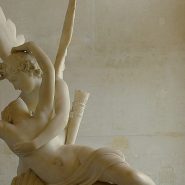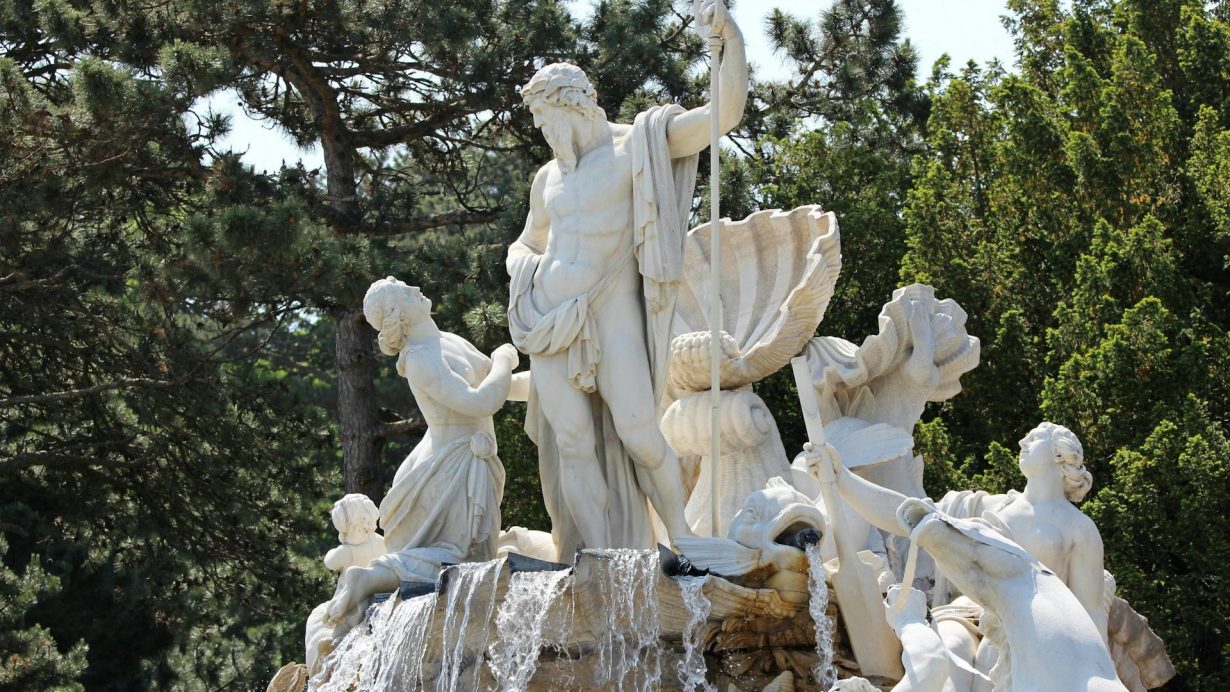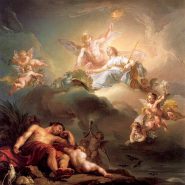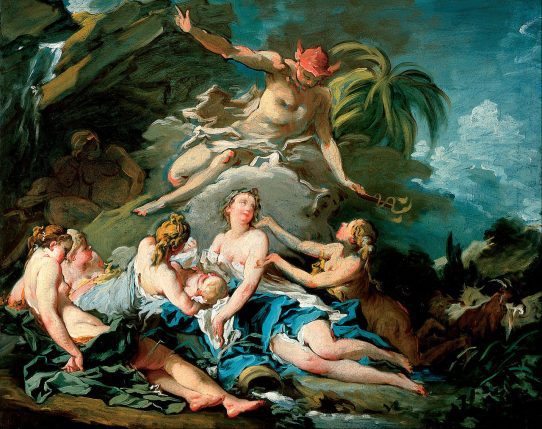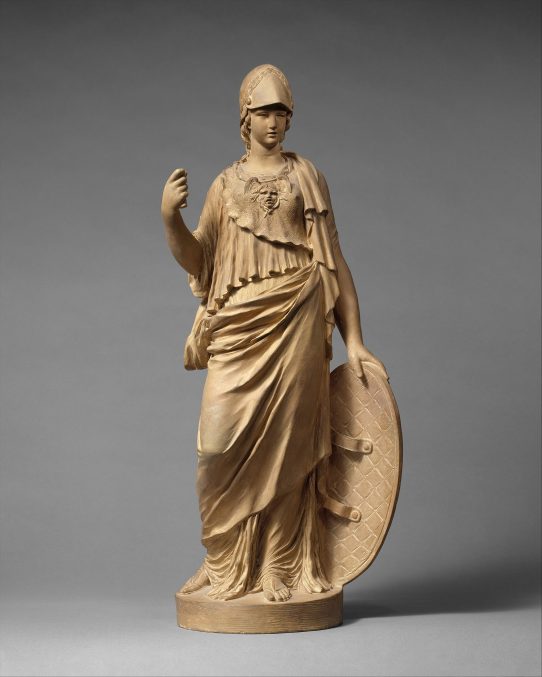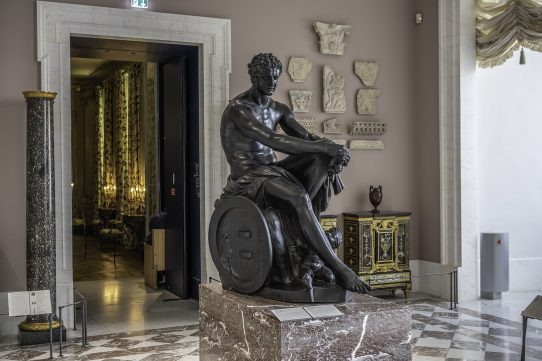Neptune, the mighty god of the sea and the restless power of the waters, was one of the most awe-inspiring deities in Roman mythology. He ruled over oceans, rivers, and all forms of flowing life, commanding the storms and shaping the boundaries of the world.
To the Romans, Neptune symbolized both creation and destruction — the force that nourished the land and the fury that could sweep it away. His trident stirred the depths, his chariot cut across the waves, and his voice echoed in thunder upon the shore.
As god of the sea and earthquakes, he embodied the mystery and might of nature’s untamed power, yet his favor brought calm waters, abundant harvests, and safe passage for sailors and merchants alike.
Name and Origin
The name “Neptune” likely derives from the ancient Italic word Neptunus, associated with moisture and clouds.
Originally, he may have been a god of freshwater springs and rivers before becoming lord of the sea through identification with the Greek Poseidon. Yet Neptune remained uniquely Roman in character: less tempestuous than Poseidon and more dignified, a guardian of stability as well as force.
His cult reflected Rome’s expansion into maritime power, transforming him from a rural water deity into a divine patron of sailors, fishermen, and travelers.
In him, Romans recognized both the unpredictable will of the sea and the steady rhythm of nature’s cycles — the eternal pulse of life flowing between chaos and calm.
Attributes and Symbols
Neptune was depicted as a robust, bearded god, majestic and commanding, holding his signature trident — a three-pronged spear capable of stirring storms or calming seas with a single motion. He was often portrayed riding a chariot drawn by hippocamps, mythical sea-horses, or dolphins, symbols of grace and speed.
His sacred animals included horses, bulls, and sea creatures, each representing strength and vitality. The dolphin signified peace and protection, while the horse, shared with his brother Mars, reflected his fiery, untamed nature. The color deep blue and the sound of crashing waves were said to mark his presence.
In art and worship alike, Neptune embodied the eternal balance between fury and fertility — the storm that nourishes as it destroys.
Family and Relationships
Neptune was the son of Saturn and Ops, and brother to Jupiter and Pluto, the divine triad who divided the universe after overthrowing their father. Jupiter claimed the heavens, Pluto the underworld, and Neptune the seas. Though often overshadowed by his elder brother Jupiter, Neptune’s realm was vast and indispensable — the living frontier that connected all lands and sustained all nations.
His wife was Salacia, goddess of the sea’s depths, who personified calm waters and hidden treasures. Their union represented the harmony between the ocean’s power and its serenity.
In some traditions, Neptune fathered Triton, a sea-god with a conch shell who calmed waves with its sound, and the giant Polyphemus, symbol of nature’s raw strength. His divine household reflected the grandeur and complexity of the world beneath the waves.
Myths and Stories
Neptune’s myths tell of rivalry, passion, and power.
One of his earliest legends recounts how he and Apollo conspired against Jupiter, seeking to overthrow their brother. As punishment, they were cast down to serve King Laomedon of Troy, where they built the city’s mighty walls. When Laomedon refused to pay them, Neptune sent a sea monster to ravage the land — a reminder that divine justice moves as deeply and swiftly as the tides.
In another story, Neptune competed with Minerva for the patronage of Athens. Striking the ground with his trident, he created a salt spring or horse, symbols of his mastery over nature. Yet the people chose Minerva’s gift of the olive tree, preferring wisdom to strength. Though defeated, Neptune’s act became an emblem of invention and the spirit of competition that shaped Roman virtue.
Other myths linked Neptune to both love and vengeance. His pursuit of the nymph Amphitrite, who fled from his advances, ended only when dolphins persuaded her to return. In gratitude, Neptune placed the dolphins among the stars. Yet his wrath was equally legendary. When offended, he could shake the earth with quakes or hurl storms that shattered fleets. Sailors feared his temper, but honored him with offerings of bulls and wine to ensure calm seas.
His myths taught reverence for nature’s power — that the same hand that feeds may also destroy.
Domains and Powers
Neptune ruled all waters — seas, rivers, lakes, and springs — and by extension, the fertility they sustained. His trident controlled tides and storms, symbolizing dominion over both surface and depth.
As Neptunus Equester, he also presided over horses and chariot races, reflecting the ancient link between the galloping waves and the thunder of hooves. His power extended to earthquakes, which the Romans believed he caused by striking the earth with his trident.
To sailors and traders, Neptune was the divine navigator who guided ships across perilous seas; to farmers, he was the bringer of rain and life. His rule was absolute yet impartial — he governed not by wrath but by the laws of balance and renewal that sustain the natural world.
Philosophy and Moral Influence
Philosophers viewed Neptune as a symbol of primal force and divine depth — the unseen strength that shapes existence from beneath. To worship him was to acknowledge the power of what lies hidden: the mysteries beneath the surface of the world and the soul. He represented motion and transformation, reminding mortals that stability arises from fluidity and that life, like water, must adapt to endure.
Stoic thinkers associated him with the element of water, one of the universe’s fundamental principles, essential for balance and growth. In Neptune’s realm, moral order was reflected in natural law: power tempered by purpose, might governed by measure.
Temples and Worship
Neptune’s worship was celebrated across the Roman world, especially in port cities and naval outposts. His principal festival, the Neptunalia, was held in July, during the heat of summer when drought threatened the land.
Romans built leafy shelters called umbrae and offered wine, incense, and bulls to the god, praying for rain and protection from drought. His temples often stood near the sea or near sources of fresh water. The most renowned, the Templum Neptuni in Rome, adorned with marine sculptures, honored him as both creator and conqueror of the waves.
His worshippers included sailors, merchants, and horsemen — all who relied on his favor for success and safety. Through these rites, Neptune’s domain extended far beyond the shore, linking every current of Roman life to the eternal flow of divine power.
Legacy and Cultural Influence
Neptune’s legacy has endured for centuries as the archetype of the sea-god — majestic, powerful, and unpredictable. His trident remains a universal emblem of maritime dominion, appearing in art, literature, and heraldry from the Renaissance to modern times.
Artists like Bernini and Rubens depicted him as the embodiment of dynamic strength, while poets invoked his name as the eternal lord of the deep. The planet Neptune, discovered in the nineteenth century, bears his name in tribute to his rule over the vast, blue expanse of the heavens.
In every age, he represents the human encounter with nature’s mystery: the awe of depth, the might of motion, and the calm that follows the storm.
Unique Traditions and Notes
Before voyages, Roman sailors poured libations of wine into the sea to appease Neptune, and horse races were held in his honor as symbols of swift passage and divine favor.
During the Neptunalia, citizens built shaded huts beside fountains and streams, celebrating water’s life-giving power. His priests, the Neptunales, conducted rites of purification for ships and harbors, ensuring safety and prosperity. Neptune’s presence was also invoked in treaties and vows, for water was sacred as witness to oaths.
Through these customs, Romans honored not only the sea but the eternal truth it symbolized: that beneath the surface of strength lies depth, and beneath every storm, the promise of renewal.
Adapted from public-domain materials, including Project Gutenberg and Wikisource.
